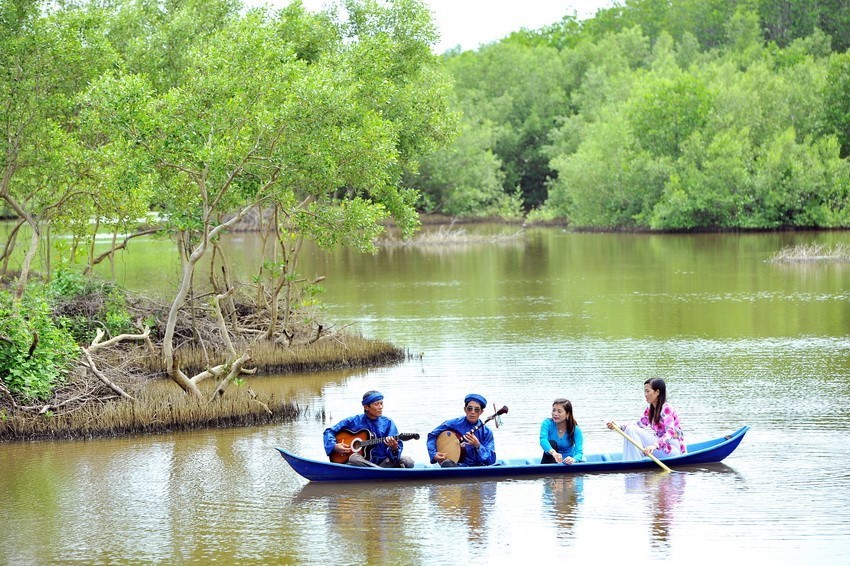
MEKONG DELTA FLOATING MARKET
FLOATING MARKETS: A UNIQUE RIVER CULTURE IN THE MEKONG DELTA
1. General introduction to floating market
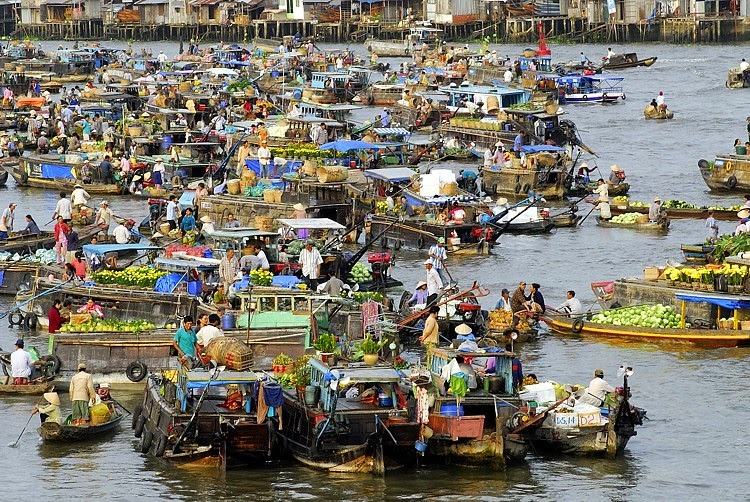
Floating market is a unique and typical form of market in the Mekong Delta (MD), where people trade and exchange goods right on boats, canoes, and ships. The appearance of floating markets is closely linked to the natural conditions of crisscrossing canals, annual floods, as well as the habit of traveling by water of the residents of the West.
- Historical and geographical context
- The Mekong Delta has a dense network of rivers and canals, connecting from the Tien River, Hau River to branches and small canals throughout the Western provinces.
- Due to the characteristics of flooding and surrounding rivers, ancient people mainly traveled and transported goods by boat. Market places gradually formed on the river, convenient for merchants (people trading on boats) and people living along the banks.
- Floating markets in community life
- A place to exchange agricultural products and essential foods: fruits, vegetables, rice, fish, fish sauce, groceries, etc…
- Not only wholesale, floating markets are also a space for community activities and cultural exchange.
- Over time, floating markets have become a symbol of river cultural tourism, attracting domestic and foreign tourists.
2. Typical floating markets in the Mekong Delta
Although scattered in many localities, some floating markets have become famous, associated with the names of each region, creating a unique tourist highlight.
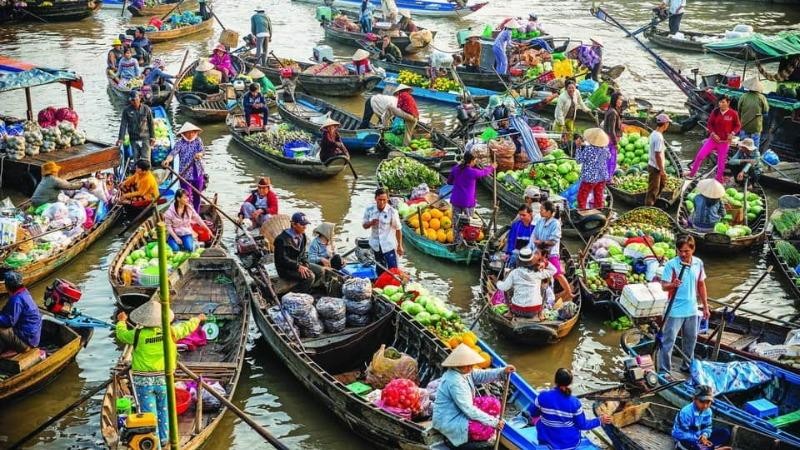
2.1. Cai Rang Floating Market (Can Tho)
- Location and scale
- About 6 km by road or 30 minutes by river from Can Tho city center.
- One of the largest floating markets in the West, bustling from 4-5 am to about 9-10 am.
- Items for sale
- Concentrates on fruits: pineapple, mango, durian, rambutan, watermelon...; fresh agricultural products such as vegetables and tubers.
- In addition, there are many boats selling breakfast (noodles, vermicelli soup, coffee), groceries, and mini floating shops on the river.
- Features
- Visitors can rent a boat and start visiting the floating market at dawn to feel the bustling atmosphere and enjoy hot food right on the boat.
- Images of boats with “cay beo” (poles to hang products) to announce the items to buyers from afar.
2.2. Cai Be Floating Market (Tien Giang)
- Location and differences
- Located on the Tien River, between the borders of Tien Giang, Vinh Long, Ben Tre..
- Not as large as Cai Rang, Cai Be Floating Market focuses on the transit of agricultural products from neighboring areas to the provinces of the Southeast.
- Goods
- The main products are still Tien Giang fruits (one of the provinces with large fruit granaries in the West), seafood, and food.
- There are large ships that buy goods in large quantities to redistribute to small traders.
- Combined with garden tourism
- After visiting the market, visitors can go to the fruit gardens, enjoy the fruits in the garden, listen to traditional music, and experience local cuisine.
2.3. Phung Hiep Floating Market (Hau Giang)
- Other names: Nga Bay Floating Market.
- Characteristics
- Located right at the intersection of seven rivers (where seven rivers intersect), creating a unique river space.
- Once a large-scale floating market, it later declined due to urban planning, but now the locality is making efforts to restore and develop tourism.
2.4. Other floating markets
- Long Xuyen floating market (An Giang), Tra On floating market (Vinh Long)…: Although not famous for international tourism, it is still very bustling, with the characteristics of trading associated with the life of people in the river area.
3. Cultural characteristics and activities of floating markets
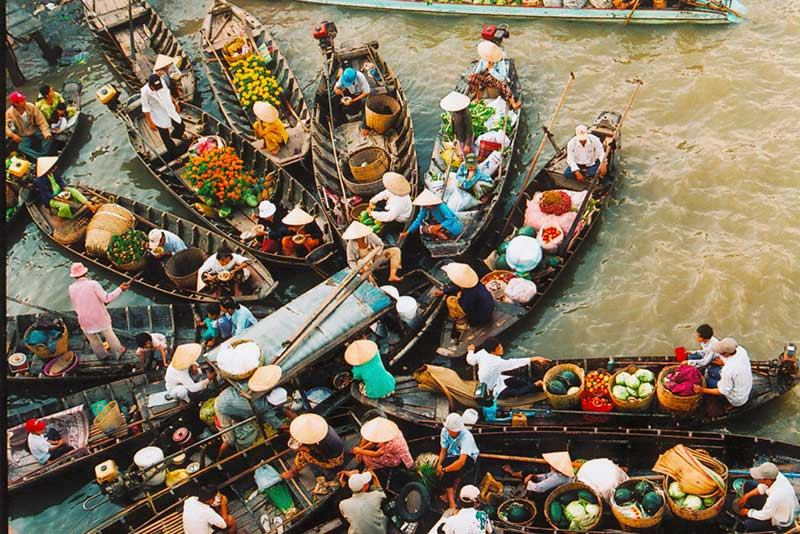
- “On the river” trading method
- Instead of displaying goods on stalls, traders use boats and canoes loaded with agricultural products, hanging samples of the products on “beo” poles for customers to recognize from afar.
- Customers who want to buy something just row the boat closer, discuss the price, and weigh and measure right on the river.
- Market time
- Usually starts very early, at dawn, and ends when the sun is high.
- In particular, the “golden hour” from 5-7 am is when the market is most bustling, with all kinds of agricultural products being traded.
- Cuisine on the river
- At the floating market, not only agricultural products are sold, but there are also boats selling breakfast: noodles, vermicelli soup, porridge, coffee, etc.…
- A bowl of hot noodles, a cup of iced coffee in the middle of the immense river creates a strange and interesting experience for tourists.
- Associated with the merchant lifestyle
- Many people are born and raised on boats, making a living by buying and selling.
- Large boats can become “mobile homes”, with a place to sleep, a kitchen, even raising poultry, growing small ornamental flowers.
- Community spirit, hospitality
- Westerners are inherently simple and gentle, not hesitating to chat, inviting tourists to enjoy fruit.
- Long-standing merchant relationships, “familiar buyers, familiar sellers”, create a sense of neighborliness right on the river.
4. Meaning and value of floating market
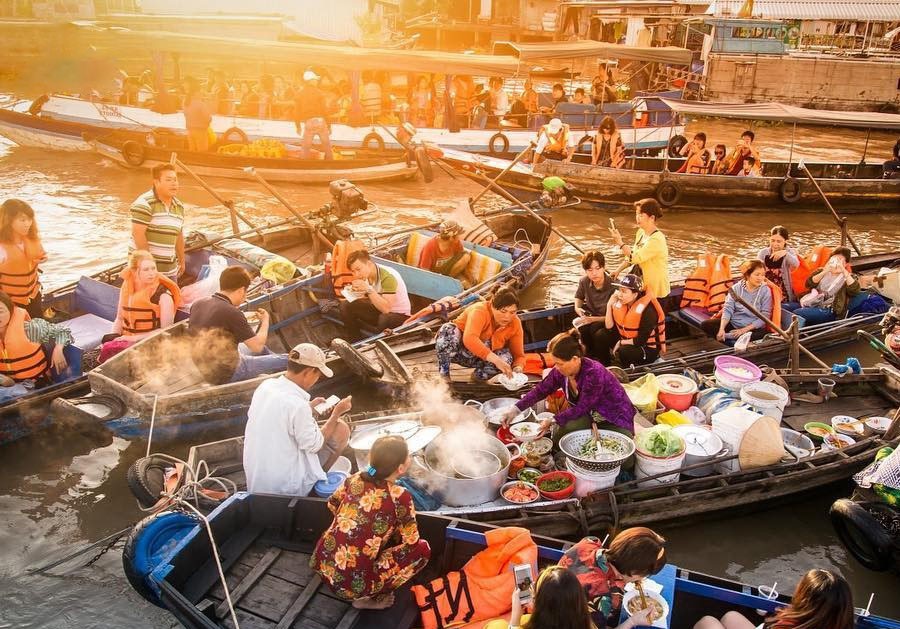
4.1. Cultural and historical values
- Preserving the river lifestyle
- Floating markets have existed for hundreds of years, reflecting the process of land reclamation and economic development in the Mekong Delta.
- Demonstrating the ability to adapt to the water environment and creativity in trading methods.
- Regional identity
- Floating markets are a vivid symbol of Western culture. When mentioning the West, many people immediately remember the image of hundreds of bustling boats, colorful fruits, friendly faces of traders, and the echoing calls of each other on the river.
4.2. Socio-economic value
- Agricultural product distribution
- Is a hub for collecting and transporting local agricultural products to other areas.
- Helps promote agricultural production, solving output for farmers.
- Employment, income
- Thousands of households live by trading and floating market trading.
- Develop food services, river transport, tourism, creating more jobs.
4.3. Tourism potential
- Cultural experience
- Domestic and foreign tourists are eager to explore the “market on the river” scene, unique ways of buying and selling.
- Combined with garden tourism, enjoying specialties, listening to traditional music.
- New tourism products
- Many combined tours, river homestays, rowing boats, “a day as a merchant”… are being exploited.
- Competing with popular types of tourism (historic sites, scenic spots), floating markets bring a unique appeal.
5. Challenges and trends in sustainable development of floating markets
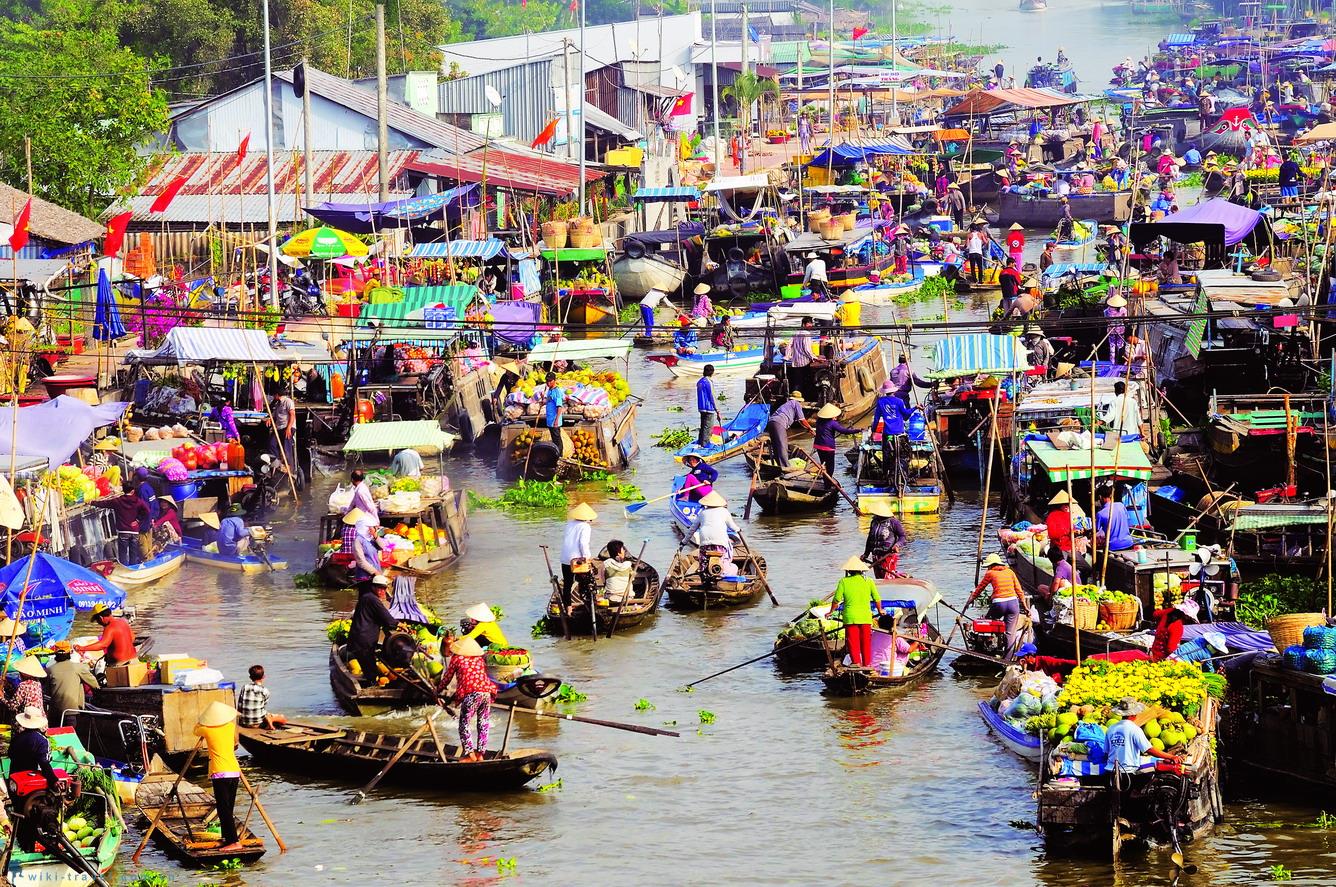
5.1. Current challenges
- Impact of urban planning
- Development of roads, bridges, supermarkets, inland markets, etc. has gradually reduced trade on the river.
- Some floating markets have lost their traditional bustle, leading to a decrease in tourism attractiveness.
- Water pollution
- Living and trading activities on the river do not treat waste and wastewater, causing pollution risks.
- The increase in waterway vehicles and plastic waste also negatively affects the landscape..
- Climate change
- River water levels are increasingly erratic: prolonged dry season, insufficient water during flood season, saline intrusion, etc…
- Cultivation, exploitation of aquatic products, and agricultural products are disrupted, making the supply of goods for floating markets unstable.
- Tourism competitiveness
- Floating markets need to be renewed, creating more attractive experiences to attract long-term visitors, avoiding boredom and excessive commercialization.
5.2. Sustainable Development Solutions
- Planning and conservation
- Local authorities should have a strategy to maintain the floating market space, support anchoring infrastructure, and collect waste on the river.
- Apply regulations on waterway traffic safety, arrange traffic routes, and create clean and beautiful landscapes.
- Diversify tourism services
- Organize experiential activities such as "enjoying cuisine on the river", "a day as a merchant", "don ca tai tu on a boat"…
- Build linked tours: visit floating markets combined with gardens, craft villages, homestays, and local art nights.
- Cultural and educational development
- Integrate education on historical and cultural values of floating markets for the younger generation, increasing pride and awareness of conservation.
- Encourage research topics and tourism start-up projects associated with this unique feature.
- Communication and promotion
- Use social networks, videos, 360-degree images, international travel sites to promote the image of floating markets.
- Create conditions for bloggers and travel vloggers to experience, share, and attract foreign tourists.
6. Experience traveling at the floating market
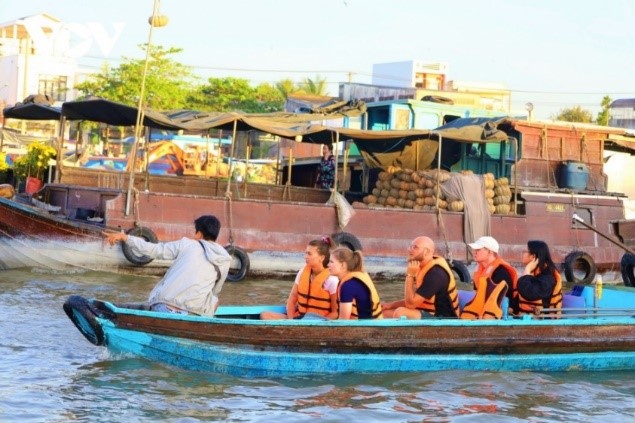
To have an impressive trip to explore the floating market, visitors can refer to the following suggestions:
- Visiting time:
- Should go early in the morning (5-7 am), when the market is bustling, you can admire the sunrise on the river.
- Visiting time usually lasts 1-2 hours or more, depending on the visitor's preferences.
- Means of transport
- Contact the tourist wharf or book a tour, or rent a small boat for a free experience.
- If traveling in a small group, a small boat is easier to get around and take photos. For large groups, it is recommended to use a covered tourist boat.
- Activities
- Enjoy typical breakfast dishes such as hu tieu, bun nuoc leo, black coffee on the boat.
- Buy fresh fruit, choose it yourself and interact with the merchants.
- Take photos, record videos to record the vibrant activities, ask people about the merchant life.
- Visit fruit gardens, garden houses, candy factories, and noodle making facilities to learn more about traditional crafts in the West.
7. Conclusion
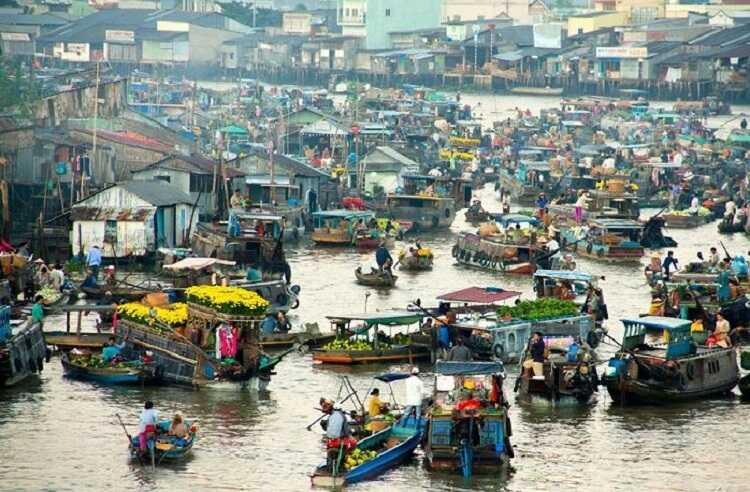
The floating market is a unique cultural gem of the Mekong Delta, carrying the image of vast rivers, gentle people and trading customs associated with boats. Having gone through many socio-economic changes, the floating market still retains part of its original features and its own appeal, becoming an unmissable destination for tourists who want to explore the "soul" of the West.
In the future, for the floating market to continue to promote its value, there needs to be close coordination between the government, local communities and tourism businesses: both preserving cultural spaces, renewing tourism products, maintaining environmental hygiene and improving service quality. Thanks to that, the floating market will forever be a symbol of river culture, a source of pride and a sustainable source of livelihood for residents of the Southwest.
Bình luận
Những bình luận mới nhất
